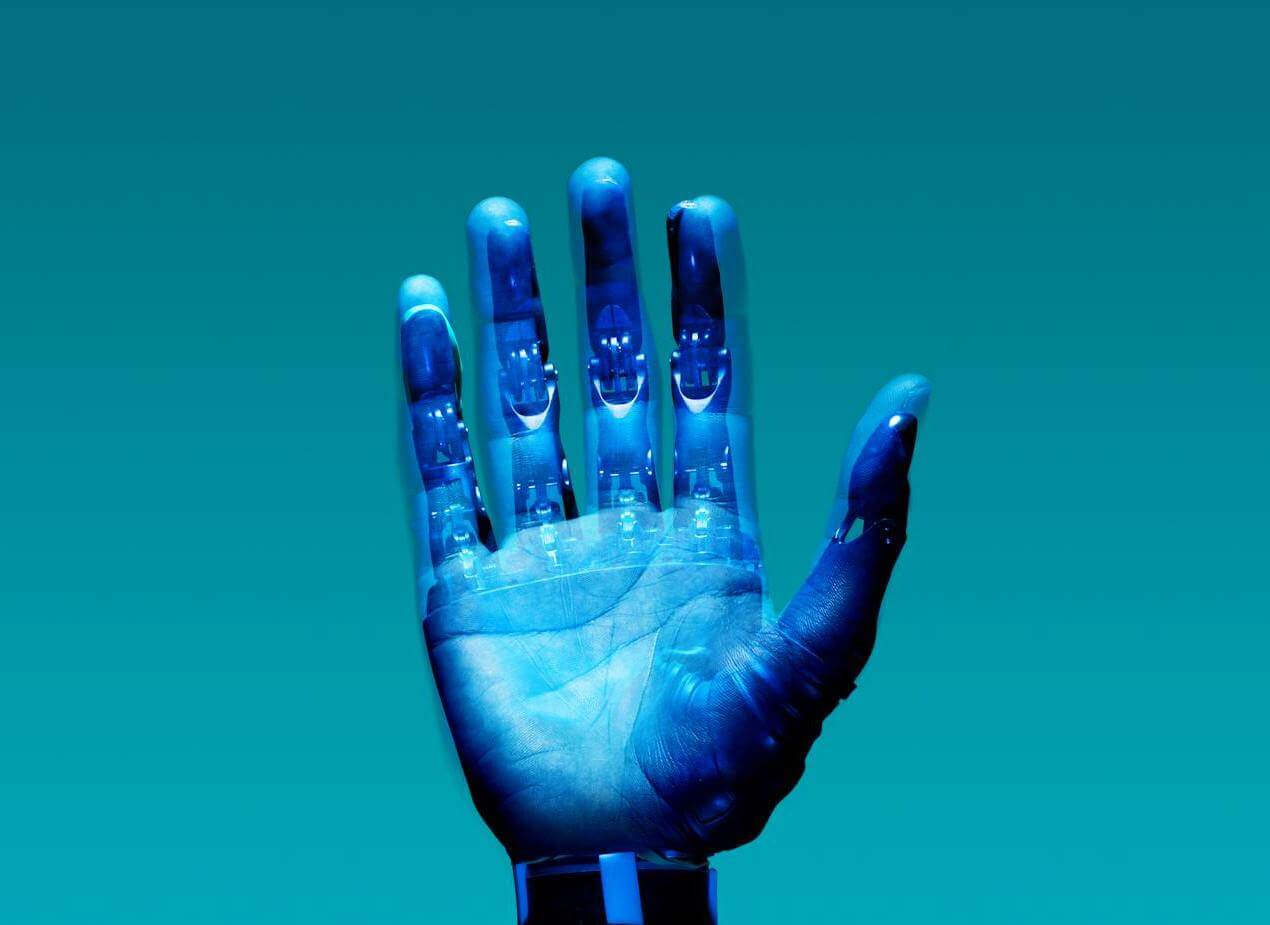Cyber threats are advancing at an alarming pace, posing significant challenges for businesses and organizations worldwide. Traditional security measures often struggle to keep up with the sophisticated tactics of modern cybercriminals. This is where artificial intelligence (AI) steps in, revolutionizing cybersecurity by enhancing threat detection and response. AI-driven cybersecurity solutions provide businesses with real-time monitoring, predictive analysis, and automated responses to mitigate risks before they escalate. Here’s how AI is transforming cybersecurity and strengthening digital defenses.
Types of AI Technologies Used in Cybersecurity
AI-driven cybersecurity leverages various technologies to improve threat detection and response. These include:
- Machine Learning (ML): ML algorithms analyze vast amounts of data to detect patterns and identify potential threats based on anomalies.
- Natural Language Processing (NLP): NLP helps in analyzing phishing emails, fraudulent transactions, and malicious communications to prevent cyberattacks.
- Deep Learning: Deep learning models recognize complex patterns in malware signatures, network activity, and user behavior to improve security.
- Neural Networks: AI-powered neural networks process massive data sets to recognize evolving cyber threats and suspicious activities.
- AI-Driven Automation: AI-powered automation tools reduce response time by instantly identifying and mitigating security incidents.
- Behavioral Analytics: AI continuously learns user behavior, detecting deviations that may indicate compromised accounts or insider threats.
These AI technologies work together to enhance cybersecurity strategies and provide a robust defense against evolving cyber threats.
1. Real-Time Threat Detection
AI-powered security systems continuously monitor networks, devices, and applications for potential threats. Unlike traditional security methods that rely on predefined rules, AI utilizes machine learning algorithms to detect anomalies and suspicious behaviors in real time. This proactive approach helps organizations respond to threats faster and minimize potential damage.
- Behavioral Analysis: AI identifies deviations from normal behavior to detect unauthorized access, unusual login attempts, and potential data breaches.
- Automated Alerts: AI-generated alerts notify security teams instantly when suspicious activity is detected.
- Threat Intelligence Integration: AI analyzes large datasets from various sources to enhance threat intelligence and identify emerging cyber threats.
- Network Traffic Monitoring: AI tools analyze vast amounts of network traffic, identifying malicious activities that may go unnoticed by traditional security systems.
For a broader look at how AI enhances business operations, including cybersecurity improvements, check out our related blog: AI in Business: Boosting Productivity & Strengthening Cybersecurity.

2. Predictive Analytics and Threat Prevention
One of the key advantages of AI-driven cybersecurity is its ability to predict threats before they occur. By analyzing historical attack data and patterns, AI can anticipate potential cyber threats and take proactive measures to prevent them.
- Advanced Threat Prediction: AI evaluates past attack vectors and patterns to anticipate future threats.
- Risk Assessment: AI assesses vulnerabilities within systems and recommends security patches or upgrades.
- Early Malware Detection: AI-based tools can identify malware signatures and block malicious software before it infiltrates networks.
- Threat Simulation: AI-driven cybersecurity platforms simulate attacks to test an organization’s defenses and improve security measures.
3. Enhanced Incident Response and Automation
AI doesn’t just detect threats—it also enables automated responses to cyber incidents. This minimizes human intervention and ensures a faster, more efficient resolution of security breaches.
- Automated Threat Mitigation: AI can isolate compromised systems, block malicious IP addresses, and enforce security protocols in real time.
- AI-Powered Incident Analysis: AI analyzes security incidents to determine their impact and suggest remediation steps.
- Reduced Response Time: AI significantly shortens the time it takes to identify, analyze, and neutralize cyber threats.
- Automated Forensics: AI-driven systems collect and analyze digital evidence to identify attack sources and prevent future breaches.
Uncertain about which IT service model fits your business best?
Our team is here to help you navigate the options and answer all your questions so you can make the best decision for your business. Get in touch for a free assessment today!
4. Adaptive Security Strategies
AI-driven cybersecurity continuously evolves based on new threats and attack techniques. Unlike traditional security measures that require manual updates, AI adapts dynamically to emerging threats.
- Self-Learning Systems: AI refines its threat detection algorithms based on real-time security incidents.
- Continuous Threat Hunting: AI actively searches for potential vulnerabilities and security gaps.
- Dynamic Policy Adjustments: AI adjusts security protocols automatically to counteract newly discovered cyber threats.
- Machine Learning-Based Patch Management: AI helps organizations prioritize software updates based on real-world threat risks.
5. Strengthening Phishing and Fraud Detection
Phishing attacks remain one of the most common cybersecurity threats. AI-driven cybersecurity solutions help detect and block phishing attempts before they reach employees.
- Email Scanning and Filtering: AI analyzes email content, sender behavior, and attachment metadata to flag suspicious emails.
- AI-Based Fraud Detection: AI monitors financial transactions to detect and prevent fraudulent activities.
- User Authentication Enhancement: AI-driven multi-factor authentication (MFA) adds an extra layer of security against identity theft.
- Voice and Biometric Analysis: AI verifies identity using voice recognition and biometric authentication, making phishing attempts less effective.
6. AI in Endpoint Security
AI plays a crucial role in securing endpoints, such as computers, mobile devices, and IoT systems. With remote work on the rise, endpoint security has become a top priority for businesses.
- Behavioral Endpoint Monitoring: AI continuously monitors endpoints for unusual activities that indicate a breach.
- Zero-Trust Security Model: AI enforces strict access controls, ensuring that only authenticated users can access sensitive data.
- Automated Patch Management: AI-driven solutions identify and apply critical software updates to protect against vulnerabilities.
- IoT Security Integration: AI monitors and secures IoT devices against unauthorized access and cyber threats.
7. AI and Cloud Security
As businesses increasingly adopt cloud computing, AI-driven security plays a crucial role in protecting cloud environments.
- Cloud Threat Detection: AI identifies suspicious activities within cloud platforms, preventing data breaches.
- Data Encryption and Access Management: AI enhances encryption and access control to secure sensitive data stored in the cloud.
- AI-Powered Compliance Monitoring: AI automates compliance checks, ensuring businesses meet regulatory security standards.
Challenges of Using AI in Cybersecurity
While AI-driven cybersecurity offers numerous advantages, it also comes with challenges that organizations must address to maximize its effectiveness.
- False Positives and False Negatives: AI systems may generate inaccurate alerts, leading to unnecessary disruptions or missed threats.
- Adversarial Attacks: Cybercriminals are developing techniques to manipulate AI models, tricking them into misclassifying threats.
- High Implementation Costs: Deploying AI-driven cybersecurity solutions requires significant investment in infrastructure, training, and expertise.
- Data Privacy Concerns: AI relies on large datasets for learning, raising concerns about data security and compliance with regulations.
- Dependence on Quality Data: The accuracy of AI in threat detection depends on high-quality, diverse datasets. Poor data can lead to biased or ineffective security measures.
Organizations must address these challenges by continuously refining AI models, ensuring data privacy, and balancing automation with human expertise.
The Future of AI in Cybersecurity
As AI continues to evolve, its role in cybersecurity will become even more sophisticated. Here are some key trends shaping the future of AI-driven cybersecurity:
- Autonomous Threat Response: AI will move beyond detection and automated mitigation to fully autonomous cybersecurity systems capable of counteracting threats with minimal human intervention.
- AI-Augmented Security Analysts: AI will assist security professionals by prioritizing threats, suggesting remediation strategies, and handling routine tasks, allowing human experts to focus on complex threats.
- Improved Threat Intelligence Sharing: AI-driven platforms will enhance collaboration by sharing real-time threat intelligence across industries, helping organizations proactively defend against emerging threats.
- Quantum Computing and AI Security: As quantum computing develops, AI-driven cybersecurity solutions will adapt to combat quantum-based threats and protect encryption methods.
- Ethical AI and Bias Reduction: Future AI security models will focus on reducing bias in threat detection algorithms, ensuring fair and accurate decision-making.
The future of AI in cybersecurity holds immense promise, providing businesses with cutting-edge tools to combat cyber threats more effectively than ever before.
For more insights on how AI-powered IT solutions are transforming small and medium-sized businesses, check out our related blog: How AI-Powered IT Solutions Are Transforming SMB Operations.
How Combined Technology Can Help
At Combined Technology, we understand the evolving cybersecurity landscape and the importance of integrating AI-driven solutions to protect businesses from emerging threats. Our expertise in managed IT services ensures that your organization benefits from cutting-edge AI security tools, real-time monitoring, and proactive threat prevention.
- Custom AI Security Solutions: We tailor AI-powered cybersecurity strategies to fit your business needs.
- 24/7 Threat Monitoring: Our team continuously monitors your systems for potential threats, ensuring rapid response to security incidents.
- Compliance and Risk Management: We help businesses stay compliant with industry regulations while minimizing cybersecurity risks.
- Future-Proofing Your Security: Our AI-driven approach adapts to evolving threats, ensuring long-term protection.
Partner with Combined Technology to implement AI-enhanced cybersecurity solutions that safeguard your business and provide peace of mind. Learn more about our cybersecurity services.
AI-driven cybersecurity is revolutionizing how businesses detect, prevent, and respond to cyber threats. With real-time monitoring, predictive analytics, and automated responses, AI enhances security defenses and minimizes risks. As cyber threats continue to evolve, organizations must leverage AI-powered security solutions to stay ahead of attackers and safeguard their digital assets. Investing in AI-driven cybersecurity is not just an option—it’s a necessity in today’s threat landscape.
By integrating AI into cybersecurity strategies, businesses can enhance resilience against cyber threats, improve efficiency, and protect sensitive information. Organizations that adopt AI-driven security solutions will be better equipped to mitigate risks and stay ahead of emerging cyber threats, ensuring a safer digital future.
Get in Touch with Us

Safeguard Your Business with Tulsa's Top Managed IT Provider
At Combined Technology, we provide a flexible, tailored approach to meet your evolving IT needs. Safeguard your business against emerging threats with our expert-managed IT services and customized cybersecurity solutions.





